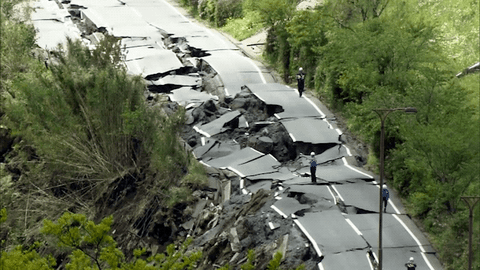[Q4] CHANGES OF THE EARTH'S SURFACE DUE TO EARTHQUAKES AND VOLCANIC ERUPTIONS
Title: Understanding Earth's Dynamic Forces: The Impact of Earthquakes and Volcanic Eruptions on the Earth's Surface
by PJ MIANA
_____________________________
Introduction:
The Earth is a dynamic and ever-changing planet, shaped by various geological forces that continuously reshape its surface. Among these forces, earthquakes and volcanic eruptions stand out as powerful and awe-inspiring events that leave a lasting impact on the Earth's surface. In this article, we will explore the fascinating changes that occur on the Earth's surface as a result of earthquakes and volcanic eruptions.
Earthquakes:
Earthquakes are sudden and violent movements of the Earth's crust, often caused by the release of stress along geological faults. These seismic events can have a profound impact on the Earth's surface, leading to several visible changes:
1. Surface Ruptures: During an earthquake, the Earth's crust can rupture along fault lines, creating visible cracks and fissures on the surface. These surface ruptures can extend for several kilometers and are often accompanied by displacement of the ground on either side of the fault.
2. Landslides: The intense shaking generated by earthquakes can trigger landslides, where large volumes of soil, rock, and debris move downhill rapidly. Landslides can reshape the landscape, altering the topography of the affected area and causing significant damage to property and infrastructure.
3. Liquefaction: In regions with loose, water-saturated soils, the ground shaking during an earthquake can cause a phenomenon known as liquefaction. This occurs when the soil temporarily loses its strength and behaves like a liquid, leading to the sinking or tilting of buildings, roads, and other structures built on top of it.
4. Tsunamis: In coastal regions, powerful earthquakes occurring beneath the ocean floor can generate tsunamis, massive sea waves that can travel across vast distances and cause widespread devastation along coastlines. Tsunamis can erode coastal landforms, flood low-lying areas, and reshape beaches and shorelines.
Volcanic Eruptions:
Volcanic eruptions are another significant geological process that can dramatically alter the Earth's surface. When molten rock, ash, and gases are expelled from a volcano onto the Earth's surface, they can produce a variety of changes:
1. Formation of New Landforms: Volcanic eruptions can create new landforms such as lava flows, lava domes, and volcanic cones. Lava flows are streams of molten rock that flow across the surface, solidifying into hardened rock formations as they cool. Lava domes are rounded mounds of lava that accumulate around a volcano's vent, while volcanic cones are steep-sided mountains formed from layers of volcanic ash, rock fragments, and lava.
2. Ashfall: During a volcanic eruption, fine particles of ash and volcanic debris are ejected into the atmosphere and carried by wind currents over vast distances. When these particles settle onto the Earth's surface, they form a layer of ash known as ashfall. Ashfall can bury vegetation, contaminate water sources, and disrupt ecosystems.
3. Pyroclastic Flows: Pyroclastic flows are fast-moving clouds of hot gas, ash, and volcanic rock fragments that race down the slopes of a volcano during an eruption. These deadly flows can travel at speeds exceeding 100 kilometers per hour and have the power to destroy everything in their path, including buildings, vegetation, and infrastructure.
4. Caldera Formation: In rare cases, particularly powerful volcanic eruptions can result in the collapse of a volcano's summit, forming a large depression known as a caldera. Calderas can range in size from a few kilometers to tens of kilometers across and are often filled with water to form crater lakes.
Conclusion:
In conclusion, earthquakes and volcanic eruptions are natural phenomena that play a significant role in shaping the Earth's surface. From surface ruptures and landslides to lava flows and pyroclastic flows, these powerful geological forces leave a lasting impact on the landscape, creating new landforms, altering topography, and shaping the world we live in. By understanding the changes that occur as a result of earthquakes and volcanic eruptions, we can better appreciate the dynamic nature of our planet and the forces that shape it.



Comments
Post a Comment